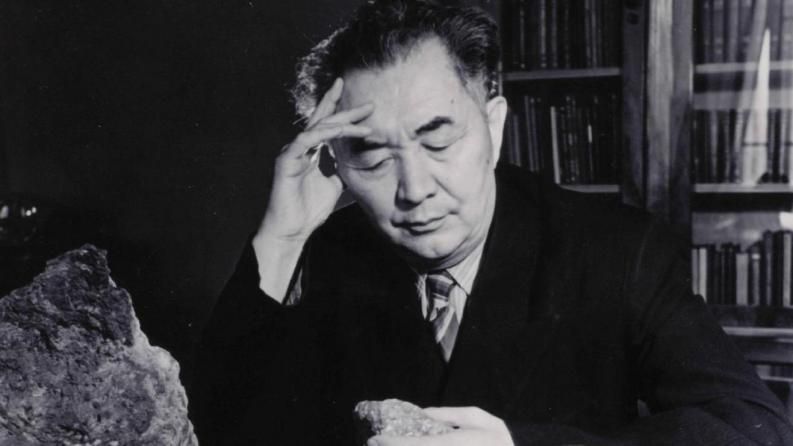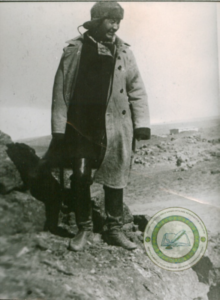ASTANA – Kazakhstan celebrates the 125th anniversary of the leading academic geologist and founder of the Kazakh Science Academy, Kanysh Satpayev, on April 12.

Kanysh Satpayev. Photo credit: satbayev.university
His research during the 1930s provided evidence of large copper deposits in Zhezkazgan, which played a key role in the growth of the industry, transforming Kazakhstan from an agrarian country into an industrial country with a good scientific base.
He published over 800 scientific papers and oversaw the publication of more than 30 scientific works collections for the Academy of Sciences of the Kazakh Soviet Socialist Republic (SSR).
Early life
Satpayev was born in 1899 in a small village in the Pavlodar region. Initially named Gabdulgani, his mother lovingly addressed him as Gani or Ganysh, which eventually led to everyone calling him Kanysh.
Satpayev received his education from a mullah, who taught him Arabic and Persian languages. Later, he attended the first Kazakh-Russian school in the district for two years.
It was a fateful meeting with Soviet geologist Mikhail Usov that sparked Satpayev’s interest in studying geology and changed his life. In early 1921, while both were undergoing treatment for tuberculosis in Bayanaul of the Pavlodar Region, Usov captivated the 22-year-old Satpayev with stories about geology, prompting him to enroll at the Institute of Technology in Tomsk. In that same year, Satpayev entered the institute, majoring in geology and mineral deposits, and graduated with honors in 1926.
Discovering the largest Zhezkazgan copper field
Satpayev’s first job was as an engineer-geologist at the Karsakpai copper mine in Zhezkazgan in 1927, marking a historic milestone as the first Kazakh geologist in centuries.
A decade ago, construction on the smelter began when the British acquired the territory from a wealthy landowner, Karsakpai, initiating copper exploration. Despite building a smelting facility and partially installing equipment, their efforts yielded minimal copper. Following the February Revolution of 1917, the British abandoned the plant, which was later completed under Soviet authority.

Satpayev with a group of geologists in 1957. Photo credit: Kazakhstan’s Central State Archive
Despite the absence of local professional staff and adequate financing, and with only equipment left by English concessionaires, Satpayev carried out thorough geological exploration works. Under his leadership, a skilled workforce was cultivated, including drilling masters, draftsmen and foremen.
The specialists who worked at the deposit and the management of the plant were very skeptical about the prospect of developing copper mining in the region. They believed that its reserves would be sufficient for the next 10-15 years, no more.
Within three years, his team scientifically validated the existence of numerous dispersed copper deposits within the Big Zhezkazgan copper deposit, with reserves totaling at least two million tons, far surpassing the 60,000 tons previously estimated by English specialists.

Satpayev on a field in Zhezkazgan in 1935. Photo credit: Kazakhstan’s Central State Archive
In 1937, the copper reserves he explored made it possible to name Zhezkazgan the largest copper deposit in the world and justify the construction of the Zhezkazgan Mining and Metallurgical Combine.
His geological work earned him the Order of Lenin in 1940, the highest state award of the Soviet Union.
“Satpayev possessed the ability to choose the right path and to pursue the intended goal without hesitation. Born in the vast steppes of Kazakhstan, he absorbed the features of their harsh nature, developing the skills of a fight for existence and the will to win. He was in love with his native land, admired the power of the geological processes that created it and believed in the unlimited wealth of its subsoil,” Soviet geology scientist Dmitri Shcherbakov wrote on this occasion.
The discovery of the Big Zhezkazgan reshaped the development of central Kazakhstan and the country as a whole. By 1940, infrastructure developments, including the Dosmurzinskoye reservoir and a railroad connecting Zhezkazgan, Karagandy, and Balkhash, were completed in the region.
Zhezkazgan’s development laid the foundation for the establishment of the country’s first higher technical educational institution in 1934, the Kazakh Mining and Metallurgical Institute, which now bears Satpayev’s name.
Satpayev also played a large role in the exploration and development of iron-manganese ores within the Zhezkazgan deposit. These crucial products fueled the growth of the Soviet Union’s steel industry during the Great Patriotic War. His expertise also manifested in his scientific forecast regarding the abundant mineral resources in Atyrau and Mangistau in western Kazakhstan.
Under Satpayev’s leadership Kazakhstan’s first comprehensive map of mineral resources was compiled.
Establishing the scientific academy
As a scientist, Satpayev had two main goals: geologic exploration and establishing a scientific society, the latter leading him to become the first president of the Academy of Sciences of the Kazakh SSR in 1946. Honest, adamant and decisive man, Satpayev was willing to share his hard-won knowledge with all who asked.

Satpayev (second raw M) during the first session of the Academy of Sciences of the Kazakh SSR in 1946. Photo credit: Kazakhstan’s Central State Archive
In a short period of time, coinciding with the difficult years of World War II, he transformed the previously overlooked Soviet science organization into a scientific headquarters of the entire republic.
Satpayev had proclaimed the academy to be the force uniting all branches of science.
“The academy’s strength lies in being the nexus where all sciences converge, serving as a comprehensive representation of various scientific branches. True advancement in science comes from its organic integration with production, wherein it aids and directs production towards advanced technological stages while also benefiting from the symbiotic relationship, thus embodying truly progressive science,” wrote Satpayev.
As the president of the academy, Satpayev initiated the establishment of research institutes, their branches and departments at the country’s largest enterprises. He conducted scientific sessions in various regions, which led to a powerful economic breakthrough.
Each year, on April 12, Kazakhstan celebrates Science Workers’ Day in honor of Satpayev’s birthday.
Culture
Kazakh culture was a big part of Satpayev’s life. He loved Kazakh oral folklore, and some of his fondest memories were generated during his conversations with the older generation, writing down from the tales and legends explaining the origin of various toponyms.
Having carefully studied various versions of the “Yer Yedige” folk epic, Satpayev prepared a new edition of its text, which was a significant contribution to the study of the medieval history of Kazakhstan.
He was also the foremost scholar who recognized the importance of Mukhtar Auezov’s “The Path of Abai.” He also contributed 25 folk songs to composer and collector Aleksandr Zatayevich and produced numerous works on theater, art, culture, and youth education.
Satpayev passed away in 1964 at the age of 65.
